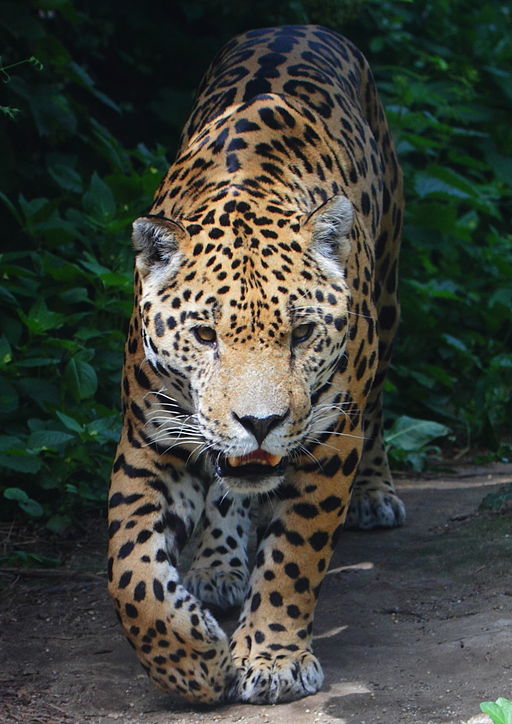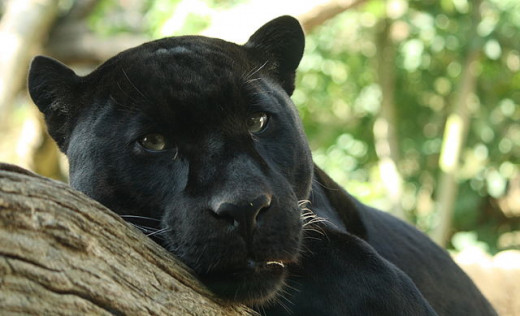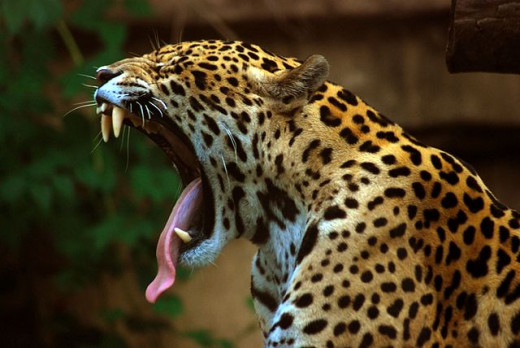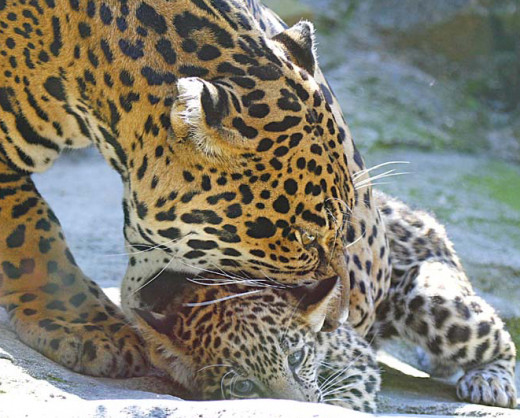Fierce Creatures: The Jaguar

The jaguar is the third largest cat in the wild kingdom. The larger cats are the tiger or lion. They are part of the "Panthera" genus. They live mostly across the southern United States and Mexico.
Are You Sure it is a Jaguar?
The jaguar looks similar to a leopard because of their spots however, it is much sturdier in build and it acts more like a tiger. It also uses the same habitat as their cat cousins the tiger and shares a love of swimming with it. The jaguar can weigh up to 211 lbs though the largest male on record was 350 pounds. This is a very large cat. The females are typically smaller than the males as with most other animal species. Their length can vary between 3.9 feet and 6.4 feet.
The jaguar has the shortest tail of all the cats in the wild and at best their tails will be about 30 inches long. This isn't the only part of them that is short though. Their legs are much shorter than other large breed cats. All of their short/long combinations of features help the jaguar thrive in many situations. It allows them to be excellent at climbing, swimming or crawling in to attack their prey.
There is also a melanistic jaguar (pictured below) that is nearly totally black with spots which are hard to see.

Jaguar Hunting Techniques
Native Americans use to call this beautiful beast yaguar which means "he who kills with one leap" and it is true. This amazing cat has truly unique hunting abilities. They stalk and ambush the same way other cats do and it plays a very important role in stabilizing the ecosystem and regulating the population of the other wild animals that it feeds upon. However, the most unique feature of the jaguar is their unusual killing method. Its bite is strong enough to bite through shelled animals. Therefore when it attacks an unshelled animal, it often bites through their skull. The kill is quick and effective.
They prefer to capture and dine on other large animals that happen to enter their territory because per day they can eat as much as 75 lbs of meat per day while in the wild. They do not eat anything other than meat. They are extremely patient animals. They do not chase their prey. They prefer to sneak up on an unsuspecting animal and attack swiftly. If no large prey is available, they may also dine on fish, turtles or other aquatic animals.After their attack has been successful they will drag their meal to a secluded area before dining on the animals neck and chest area.

Reproduction and Jaguars
Females are ready to breed by the time they are two, males tend to wait until they are three or four years of age. Once they have reached breeding age, they may breed throughout the year while in the wild. The female will leave scent marks to let the male know that she is ready for mating and then after mating the male and female will part ways. The female will gestate for between 93-105 days and then be solely responsible for caring for her young. She will often deliver one to four cubs at a time.
For the first two weeks her cubs will be completely dependent upon her because they are born blind. They will be weaned by the time they are three months and will stay in the den for six months before they start to hunt with their mother. They will remain in her care for one to two years prior to leaving her in order to find their own territory. Jaguars are one of the longest living wild cats In captivity they can live up to 23 years. In the wild they live between 12-15 years if all goes well for them.

The Jaguar's Anti-Social Existence
Outside of the mother cub relationship and coming together for mating, they are solitary creatures. They typically do not want to interact with other jaguars in the area. A female's territory may overlap with other females but male's territories do not overlap.Scent and markings play a large role in this cat's life. Not only do they leave scent marks behind to let others know they are ready to mate but they also use scents to mark their territory. They may scratch a tree to mark it or put urine or feces around their parameter.
Jaguars are one of the most unlikely cat breeds to try to attack a human. In the rare case that it does attack a human, often you can see that the cat is old or has bad teeth that prevent it from hunting as it normally would on another large animal. In situations where the jaguar attacks its zookeeper in captivity, it can often be related to the animal being afraid at the time.





